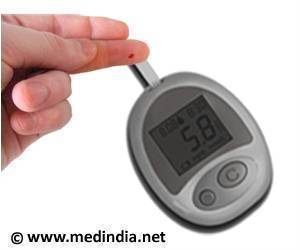
The findings, being presented at the Annual Meeting of the European Association for the Study of Diabetes (EASD), held online this year (27 Sept-1 Oct), suggest that glycemic (blood sugar) control substantially improved in individuals with T1D.
“As the pandemic unfolded, there were concerns that an increase in remote consultations and the scale back of face-to-face appointments alongside changes in daily life and exercise, and increased feelings of stress and anxiety, would have a negative impact diabetes control”, explains lead author Professor Claudia Eberle from the University of Applied Sciences in Fulda, Germany.
“Our analysis has revealed that lockdown improved the way people with type 1 diabetes managed their condition. However, people with type 2 diabetes paid a heavy price, with many experiencing deteriorating glycemic control and weight gain—which are associated with many of the common types of cancer, blindness, amputations as well as heart attacks and strokes.”
In 2019, over 9% of adults aged 20-79 years worldwide—over 463 million adults—were living with diabetes.
T1D is the second most common chronic disease in children, accounting for 85% of diabetes in the under 20s (1.1 million cases in 2019), and it is on the rise.
People with T1D often experience very high blood sugar. But low insulin levels, as a result of the immune system attacking insulin-producing beta cells, mean that they cannot use much of the glucose in their blood. T2D accounts for around 90-95% of all diabetes diagnoses, and causes the level of sugar in the blood to become too high.
Poor glycemic control can cause disabling and life-threatening complications such as heart attacks, stroke, chronic kidney disease, and retinopathy (the most common cause of irreversible blindness in adults), so it is important that diabetics keep blood sugar levels as close to the normal range as possible.
In this study, researchers searched for all studies published in English or German which reported the impact of COVID-19 lockdowns on glycemic control in patients with either T1D or T2D. In total, 33 peer-reviewed studies up to March 2021 were included in the analyses.
Lockdown linked to improved blood sugar control in type 1 diabetes
The researchers found that in 25 studies including 2,881 individuals with T1D, 18 studies (72%) showed clear improvements in glycemic control, 4 (16%) showed no changes, while 3 studies (12%) reported a deterioration—possibly due to an interruption in health care services, as seen in India where insulin was in short supply.
The changes in glycosylated hemoglobin (HbA1c; indicating how well the body is controlling blood glucose levels) and time spent in the target blood sugar range (TIR, between 70 and 180 mg/dL) from pooled studies were also favorable.
READ RELATED: Elizabeth Day: Why I'm getting younger this year
Compared to before lockdown, HbA1c values went down significantly in 11/25 studies, with HbA1C levels declining by an average of 0.05%. The TIR also improved significantly (by an average 3.75%) in 18/25 studies.
“Lockdown measures may have given people with type 1 diabetes more time to look after themselves, allowing them to eat more healthily and keep a close eye on their blood sugar levels. A more ordered routine, especially with respect to meal timing, may also have had health benefits”, explains Professor Eberle.
“On top of that, the availability of digital management like telemedicine may have improved contact with healthcare providers, while almost all of the patients in our study had access to digital treatments—such as continuous and flash glucose monitoring that track sugar levels in real time and insulin pumps that provide a steady stream on insulin into the body. These factors may have counteracted lockdown consequences such as less physical activity and the harmful effects on mental health.”
Worsening blood sugar control and weight gain in type 2 diabetes
In contrast, the analysis found that in 8 studies including 1,823 individuals with T2D, half the publications noted short-term worsening in blood sugar control during lockdown, while a quarter (2 studies) showed some improvement.
Overall, HbA1C levels increased by an average of 0.14% through the lockdowns. Moreover, 3 studies reported increases in body mass index (BMI) of between 0.3 kg and 0.95 kg, while one reported a substantial improvement in BMI.
According to Professor Eberle, “During lockdown, people with type 2 diabetes may have developed unhealthy habits, such as eating more snacks, more screen time, and less physical activity. At the same time, lack of sleep, increased stress, anxiety, and restricted access to hospitals and pharmacies, may have heightened the difficulty of achieving good blood sugar control. Larger studies in different locations will be needed to identify the actual impact of lockdown in people with diabetes on a broader scale.”
The authors note several limitations in the methodology and reporting of studies in the analysis, including the exclusion of non-English and non-German-language articles and that their findings show observational associations rather than cause and effect.
They also note that many of the papers included in the analysis were based on patients from Europe, particularly Italy and Spain, where lockdowns tended to be very strict, so the findings may not be generalizable to all countries.
Source: Eurekalert
Source:




